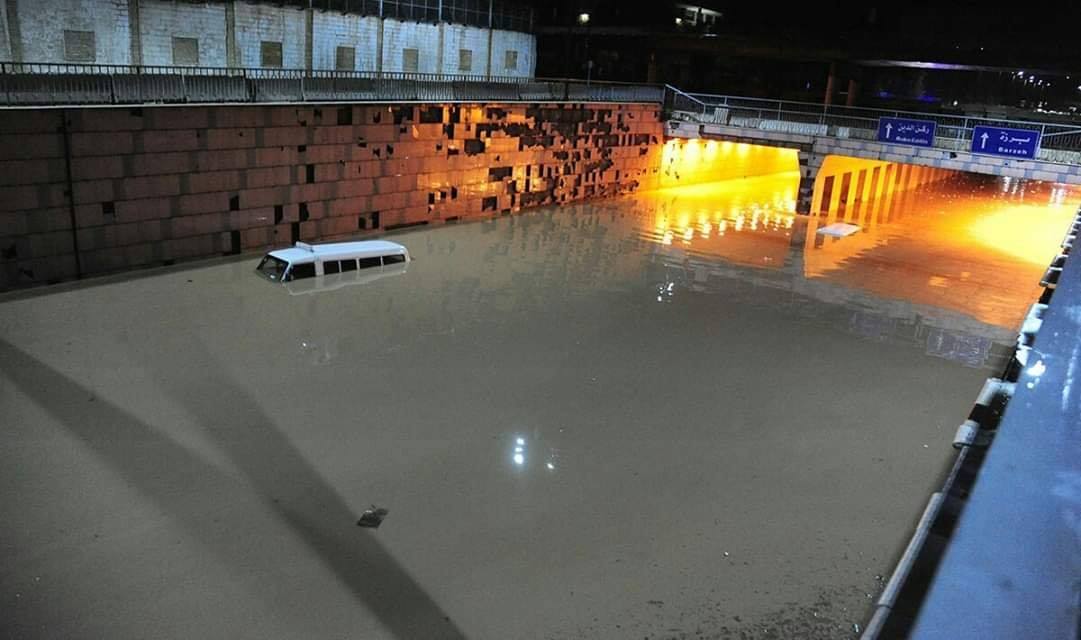On Saturday, the streets and squares of the capital Damascus were drowned in flash floods that led to civilian victims and paralyzed traffic on the capital’s main streets.
Local sources said that the victims were two children from the Wadi Barada area in the village of Deir Moqran, who died during the flash floods that affected the village hours after the heavy rains which the region witnessed.
Videos and images distributed by activists on social media showed traffic jams as a result of the rising water levels in the streets, which caused chaos in Damascus and its countryside and clearly showed the failure of the Assad government to take the necessary measures to create drainage.
Pools of water formed in squares and tunnels, which led to traffic coming to a complete standstill in a number of parts of the capital, amid severe anger among residents at the deteriorating regime services — especially given that the floods are repeated each year.
The Ummayad Square area, the Thowra Bridge, Kafr Sousa, al-Mezzeh and the al-Kineesa Square in Damar also witnessed flooding, and images published by activists showed flooding of the al-Adawi tunnel in Damascus and it being closed to traffic.
The regime’s SANA news agency said that ten traffic accidents occurred in the capital Damascus on Saturday, resulting in material damage, and said that all the tunnels in the city where water collected had become impassable.
This is not the first time that Damascus has seen such flooding, as repeated heavy rains in recent years have led to flooding which caused deaths, due to the negligence of the regime and its administrative failure to take the necessary steps.
This article was translated and edited by The Syrian Observer. Responsibility for the information and views set out in this article lies entirely with the author.


